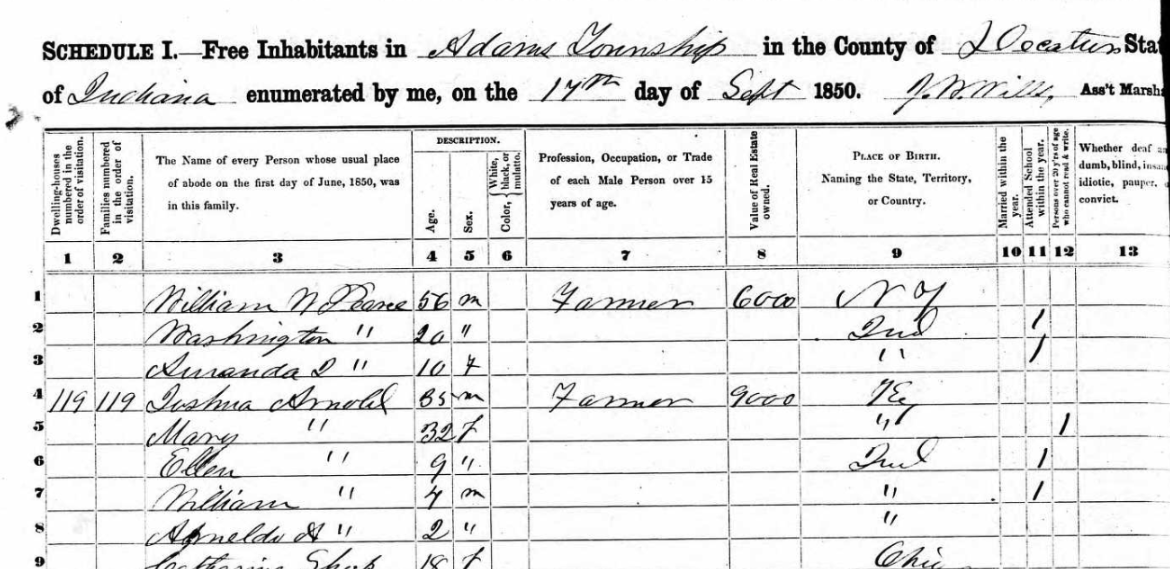
22 January 2015
Do you calculate and apply "census math" correctly? If the 1850 census says that a man is 56 years old and we calculate that he was born in 1794, odds are 7:5 that we're wrong.
The official date varied from year to year. In 1850, the year of our riddle, the official date was 1 June. All ages were supposed to be given as of that date. Therefore, a man said to be 56 would have been born between 2 June 1793 and 1 June 1794. To put it another way, there were 7 months of 1793 into which the birth could have fallen, but only 5 months of 1794.
Most of our relational databases—as well as the algorithms used by online census providers—do a quick 'n dirty calculation: 1850 - 56 means a 1794 birth. If we settle for that, the odds are 7:5 that we'll err.
IMAGE CREDIT: 1850 U.S. Census, Decatur County, Illinois, Adams Township, p. 111 verso; via Ancestry.com (http://www.Ancestry.com : accessed 5 December 2014).
This is a very good pointer
This is a very good pointer that cannot be repeated too often.
A similar mistake is often made when a reference to a death date includes "in her 78th year." This means she has not yet reached her 78th birthday, so it is the 77th birthday that was reached before death, according to the informant for the record, obituary, biographical sketch or gravestone inscription.
Thanks as always,
That "... th year" is a very
That "... th year" is a very good reminder also, Jade. Thanks for adding it.
Another "census math" wrinkle...
For the 1841 UK census, children 15 and under were to have their ages record exactly, while anyone over 15 years old was supposed to have their age rounded down to the nearest 5 years. So someone listed as 40 years old in the 1841 UK census may very well be up to 44 at the time of the census. This instruction was not always followed, so some ages are recorded exactly. It certainly makes estimating year of birth a fun exercise! ;^)
It definitely does, Amos!
It definitely does, Amos! Still, knowing the instructions for each census and making the effort to analyze how well they are followed and to record our data with precision also helps us avoid creating errors of our own.